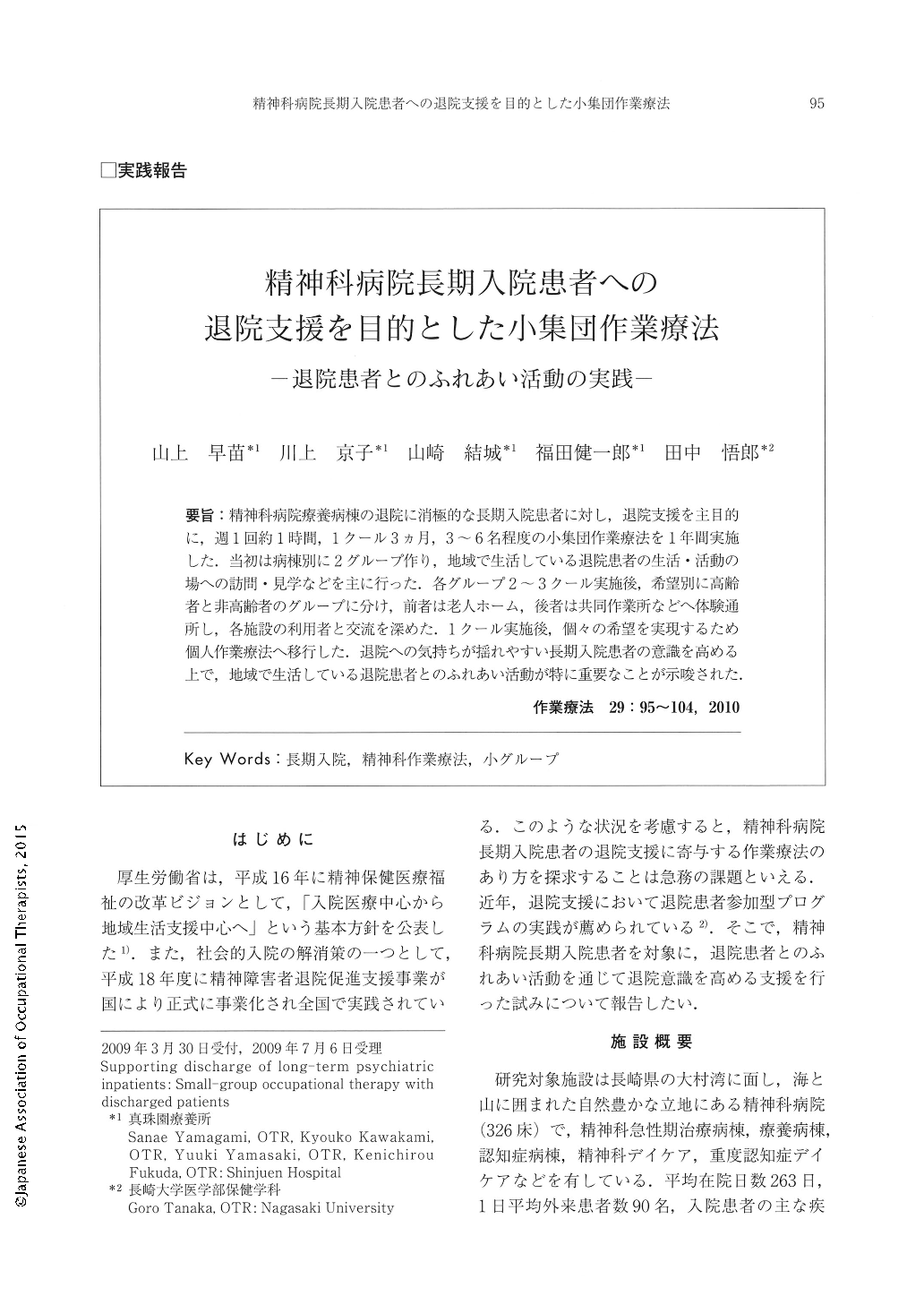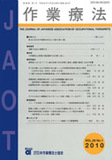Japanese
English
- 販売していません
- Abstract 文献概要
- 1ページ目 Look Inside
- 参考文献 Reference
要旨:精神科病院療養病棟の退院に消極的な長期入院患者に対し,退院支援を主目的に,週1回約1時間,1クール3ヵ月,3〜6名程度の小集団作業療法を1年間実施した.当初は病棟別に2グループ作り,地域で生活している退院患者の生活・活動の場への訪問・見学などを主に行った.各グループ2〜3クール実施後,希望別に高齢者と非高齢者のグループに分け,前者は老人ホーム,後者は共同作業所などへ体験通所し,各施設の利用者と交流を深めた.1クール実施後,個々の希望を実現するため個人作業療法へ移行した.退院への気持ちが揺れやすい長期入院患者の意識を高める上で,地域で生活している退院患者とのふれあい活動が特に重要なことが示唆された.
Long-term inpatients of a psychiatric hospital rehabilitation ward who were reticent to being discharged participated in small-group occupational therapy for 1 year in order to aid transition back into the community. The group therapy involved 3-6 patients meeting for about 1 hour weekly in 3-month cycles. At first the patients in each ward formed two groups, and they visited patients who had been discharged, planned and took day trips and visited community work centers. Each group received this therapy for two or three cycles, and then the patients were regrouped based on their personal objectives and goals, resulting in two groups : an elderly group and a nonelderly group. The elderly group visited nursing homes, while the non-elderly group visited work centers and hospital day-care centers to encourage interaction with users at different facilities. After the first cycle, patients received individualized occupational therapy to achieve individual goals. The results suggest that when encouraging long-term inpatients, who are reticent to or have mixed feelings about being discharged, interaction with patients who have been discharged is particularly important.

Copyright © 2010, Japanese Association of Occupational Therapists. All rights reserved.


